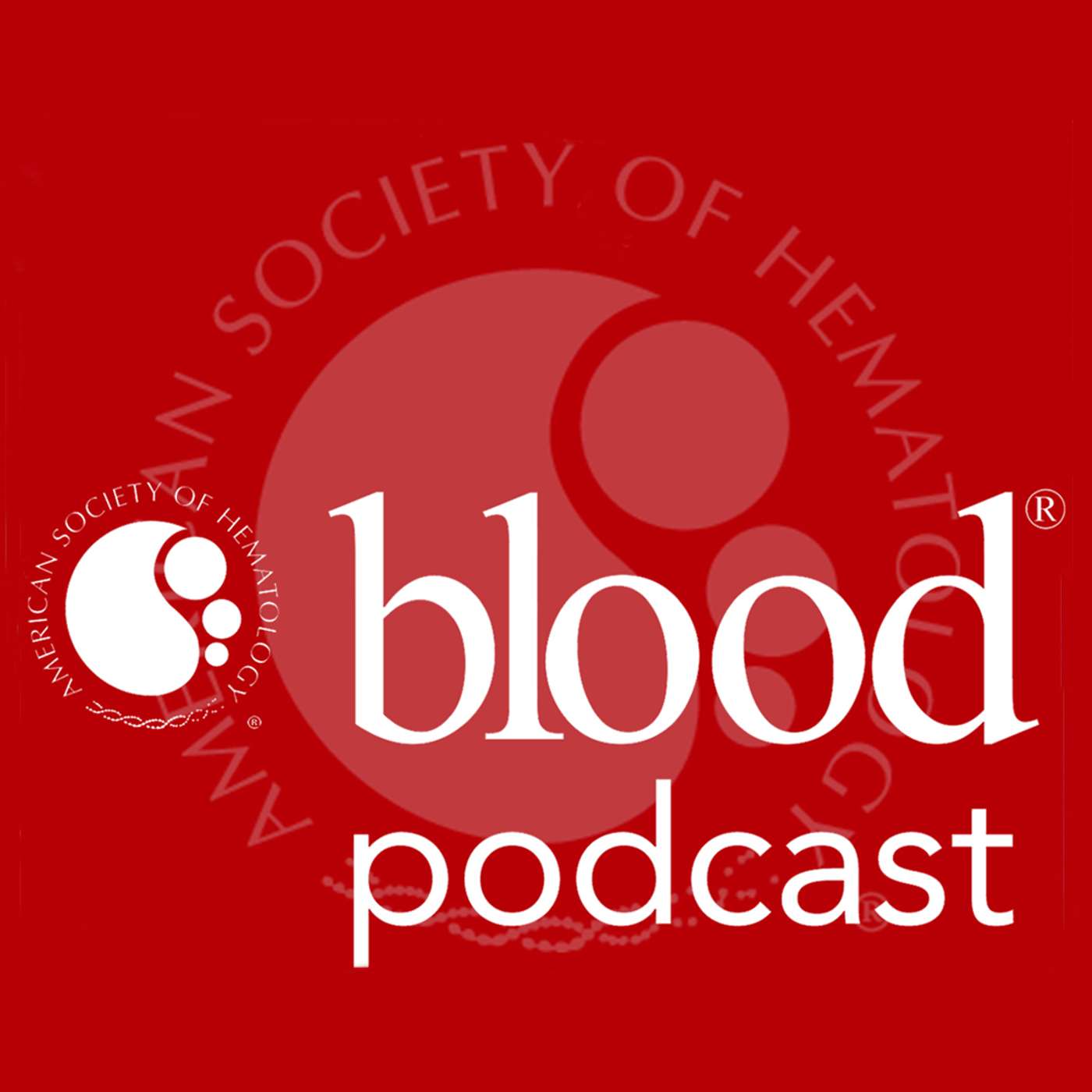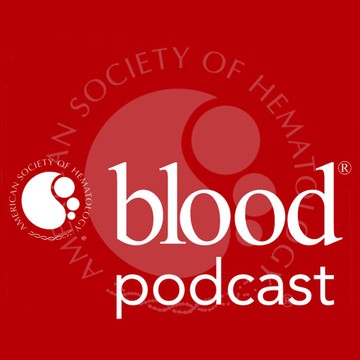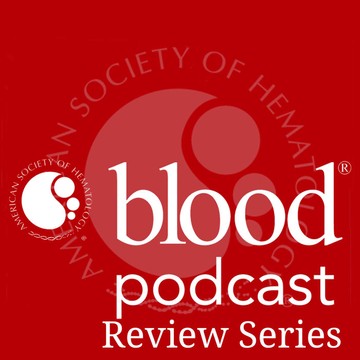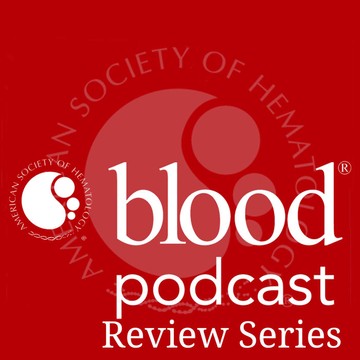

Blood Podcast
American Society of Hematology
The Blood Podcast summarizes content recently published in Blood, the most cited peer-reviewed publication in the field of hematology.
Episodes
Mentioned books

Mar 31, 2025 • 15min
Blood Bonus Episode: What is a Blood group?
Dr. Nicole Thornton, head of the International Blood Group Reference Laboratory, discusses groundbreaking findings on the AnWj-negative blood group. She reveals how deletions in the MAL gene lead to the absence of Mal protein, solving a long-standing mystery. The conversation dives into the implications for transfusion medicine and the significance of the ANWJ antigen. Additionally, the episode covers genetic factors affecting antibody responses in hematological malignancies, highlighting the importance of blood group research in targeted therapies.

Mar 27, 2025 • 19min
Itacitinib in haploidentical hematopoietic cell transplantation, diagnosis and management of purpura fulminans, and lack of evidence for sickle cell crisis-associated mortality in individuals with sickle cell trait
In this week's episode, we’ll learn more about using itacitinib for the prevention of graft vs host disease in haploidentical transplants, diagnosis and management of purpura fulminans, and results of a systematic review seeking evidence for sickle cell crisis-associated mortality in individuals with sickle cell trait. Featured Articles:Itacitinib for prevention of graft-versus-host disease and cytokine release syndrome in haploidentical transplantationHow I diagnose and treat acute infection–associated purpura fulminansSickle cell trait does not cause “sickle cell crisis” leading to exertion-related death: a systematic review

Mar 20, 2025 • 19min
Time-limited triplet therapy in relapsed/refractory CLL; patient-reported outcomes in chronic GVHD-related sclerosis; myeloid bias mechanisms in hematopoiesis
In today's episode, we'll discuss time-limited triplet therapy in relapsed or refractory CLL. Zanubrutinib, venetoclax and obinutuzumab induced deep remissions, and was well tolerated, even in very high-risk patients, and those with prior exposure to targeted therapies. After that: researchers chronicle the development of a patient-reported outcome measure for sclerosis associated with chronic GVHD—graft-versus-host disease. The new symptom scale—currently undergoing validation studies—may provide valuable information regarding severity, functional impact, and response to therapy. Finally, a study of changes in population dynamic rates that underlie inflammation-associated myeloid bias. The work demonstrates the use of mathematical models to deliver critical biological insights and uncover underlying mechanisms.Featured Articles:MRD-guided zanubrutinib, venetoclax, and obinutuzumab in relapsed CLL: primary end point analysis from the CLL2-BZAG trialDevelopment of the Lee Symptom Scale–Skin Sclerosis for chronic GVHD–associated sclerosisPopulation dynamics modeling reveals that myeloid bias involves both HSC differentiation and progenitor proliferation biases

Mar 13, 2025 • 21min
Azacitidine plus venetoclax in high-risk myelodysplastic syndromes, post-CAR T-cell hematotoxicity in B-cell acute lymphoblastic leukemia (B-ALL), and inotuzumab ozogamicin resistance in B-ALL
Explore the promising combination of azacitidine and venetoclax for treating high-risk myelodysplastic syndromes. Discover a cutting-edge risk-scoring system that predicts hematotoxicity after CAR T-cell therapy in B-cell acute lymphoblastic leukemia (B-ALL). Additionally, learn about the fascinating mechanisms behind inotuzumab ozogamicin resistance, highlighting the DNTT gene's role as a potential biomarker for treatment challenges. This deep dive into hematologic treatments offers insight into the future of cancer care.

Mar 6, 2025 • 18min
Mutations in AMBRA1 aggravate β-thalassemia; targeting MYD88 mutations in lymphomas; air pollution and incident VTE risk
In this week's podcast, a potential new therapeutic target in beta-thalassemia. The E3 ubiquitin ligase AMBRA1 promotes autophagic clearance of free alpha-globin. Researchers describe mutations in the AMBRA1 gene that impair this clearance, exacerbating ineffective erythropoiesis and disease severity. After that: targeting MYD88 mutations. Lasalocid-A is a compound that selectively binds to the MYD88 L265P mutant protein, which is found in a range of B-cell lymphomas. New research shows its potential to inhibit tumor growth, overcome ibrutinib resistance, and synergize with venetoclax. Finally: air pollution is linked to an increased risk of venous thromboembolism in a prospective, community-based cohort study. The findings highlight the harms of pollution, and support the case for global efforts to improve public health.Featured Articles:Mutations in AMBRA1 aggravate β-thalassemia by impairing autophagy-mediated clearance of free α-globinLasalocid A selectively induces the degradation of MYD88 in lymphomas harboring the MYD88 L265P mutationAir pollution is associated with increased risk of venous thromboembolism: the Multi-Ethnic Study of Atherosclerosis

Feb 27, 2025 • 19min
Hypercalcemia in monoclonal gammopathy of undetermined significance, neutrophil gelatinase-associated lipocalin in hemostasis, and CD19-targeted NK- or T-cell therapy combined with anti-CD19 monoclonal antibodies
In this week's episode we’ll learn more about the significance of hypercalcemia in monoclonal gammopathy of undetermined significance, the role of neutrophil gelatinase-associated lipocalin in hemostasis, and the feasibility of combining CD19-targeted NK- or T-cell therapy with anti-CD19 monoclonal antibodies.Featured Articles:Approaching Hypercalcemia in Gammopathy of Undetermined Significance: Insights from the iStopMM study Deficiency of neutrophil gelatinase-associated lipocalin elicits Hemophilia-like bleeding and clotting disorder Anti-CD19 antibody cotreatment enhances serial killing activity of anti-CD19 CAR-T/-NK cells and reduces trogocytosis

Feb 27, 2025 • 33min
Review Series on a Quarter Century of TKIs in CML
In this Review Series episode Reflections on a Quarter Century of TKIs in CML introduced by Associate Editor Dr. Jason Gottlieb, we’ll hear from contributing authors Drs. Brian Drucker, Francois Guillot, Tim Hughes and Michael Deininger, as they discuss how CML treatment has been impacted since the introduction of tyrosine kinase inhibitors 25 years ago.Click here to view the complete Review Series featured in Volume 145 Issue 9 of Blood.

Feb 21, 2025 • 19min
A “belt and suspenders” approach to PNH; oral pathogens exacerbate chronic GVHD; microbial metabolome changes may adversely impact CAR-T outcomes
In this week's episode, we'll hear about a “belt and suspenders” approach to paroxysmal nocturnal hemoglobinuria, or PNH. We’ll review long-term efficacy data for danicopan—an oral complement factor D inhibitor recently approved as an add-on to C5 inhibitor therapy.After that: researchers show how oral pathogens may exacerbate chronic graft-versus-host disease. And they assess targeted interventions to mitigate these effects. Finally, we move from the oral to the gut microbiome. New findings suggest that intestinal dysbiosis, induced by antibiotics, may adversely affect outcomes among patients who are receiving CAR-T cell therapy.Featured Articles:Long-term efficacy and safety of danicopan as add-on therapy to ravulizumab or eculizumab in PNH with significant EVHOral inflammation and microbiome dysbiosis exacerbate chronic graft-versus-host diseaseAntibiotic-induced loss of gut microbiome metabolic output correlates with clinical responses to CAR T-cell therapy

Feb 13, 2025 • 23min
Mosunetuzumab in relapsed/refractory follicular lymphoma, CD70 CAR T-cells and an anti-CD33/anti-CD3 bispecific antibody in acute myeloid leukemia, and ferroptosis in stored red blood cells
In this week's episode we’ll find out about longer term results from a pivotal trial of mosunetuzumab in relapsed/refractory follicular lymphoma, potential use of CD70 CAR T-cells that secrete an anti-CD33/anti-CD3 bispecific antibody as a therapy for acute myeloid leukemia, and how ferroptosis regulates hemolysis in stored red blood cells.Featured Articles:Long-term 3-year follow-up of mosunetuzumab in relapsed or refractory follicular lymphoma after ≥2 prior therapiesCD70 CAR T cells secreting an anti-CD33/anti-CD3 dual-targeting antibody overcome antigen heterogeneity in AMLFerroptosis regulates hemolysis in stored murine and human red blood cells

Feb 13, 2025 • 32min
Review Series on Basic/Translational Science of Factor VIII, Factor IX, and von Willebrand Factor
In this Review Series episode on Basic/Translational Science of Factor VIII, Factor IX, and von Willebrand Factor introduced by Dr. Thomas Ortel, we’ll hear from contributing authors Drs. Ben Samuelson Jones, Mac Monroe and Peter Lenting as they discuss how the functional roles of these 3 proteins are interconnected. Click here to view the complete Review Series featured in Volume 144 Issue 21 of Blood.


